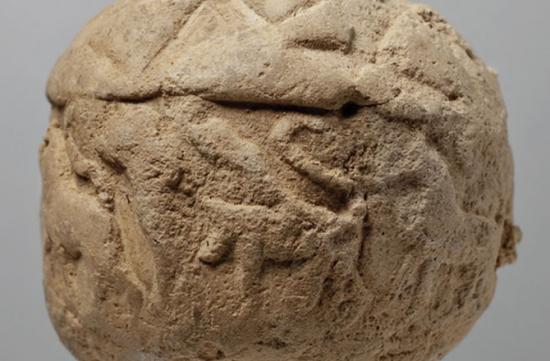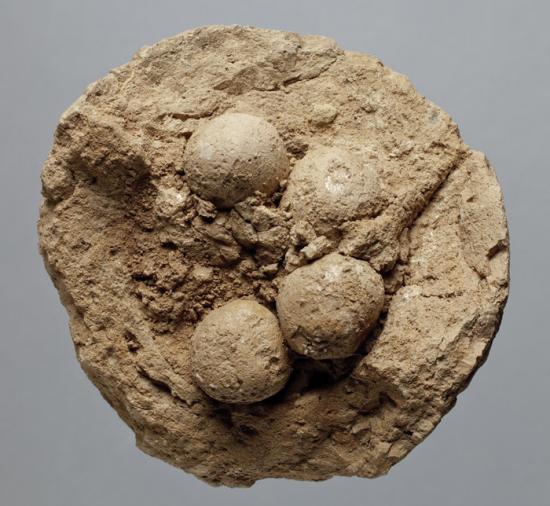Owen Jarus
Source - http://news.discovery.com/history/archaeology/clues-to-prehistoric-code-foundin-mesopotamia-131011.htm

Archaeologists are using CT scanning and 3D modelling to crack a lost prehistoric code hidden inside clay balls, dating to some 5,500 years ago, found in Mesopotamia. ANNA RESSMAN/COURTESY ORIENTAL INSTITUTE OF THE UNIVERSITY OF CHICAGO
Researchers studying clay balls from Mesopotamia have discovered clues to a lost code that was used for record-keeping about 200 years before writing was invented.
The clay balls may represent the world's "very first data storage system," at least the first that scientists know of, said Christopher Woods, a professor at the University of Chicago's Oriental Institute, in a lecture at Toronto's Royal Ontario Museum, where he presented initial findings.
The balls, often called "envelopes" by researchers, were sealed and contain tokens in a variety of geometric shapes — the balls varying from golf ball-size to baseball-size. Only about 150 intact examples survive worldwide today.
The researchers used high-resolution CT scans and 3D modeling to look inside more than 20 examples that were excavated at the site of Choga Mish, in western Iran, in the late 1960s. They were created about 5,500 years ago at a time when early cities were flourishing in Mesopotamia.
Researchers have long believed these clay balls were used to record economic transactions. That interpretation is based on an analysis of a 3,300-year-old clay ball found at a site in Mesopotamia named Nuzi that had 49 pebbles and a cuneiform text containing a contract commanding a shepherd to care for 49 sheep and goats.
How these devices would have worked in prehistoric times, before the invention of writing, is a mystery. Researchers now face the question of how people recorded the number and type of a commodity being exchanged without the help of writing.
Peering inside
The CT scans revealed that some of the balls have tiny channels, 1-2 millimeters (less than one-tenth of an inch) across, crisscrossing them. Woods said he's not certain what they were used for, but speculates the balls contained fine threads that connected together on the outside. These threads could have held labels, perhaps made out of wax, which reflected the tokens within the clay balls.
The tokens within the balls come in 14 different shapes, including spheres, pyramids, ovoids, lenses and cones, the researchers found. Rather than representing whole words, these shapes would have conveyed numbers connected to a variety of metrological systems used in counting different types of commodities, Woods suggested. One ovoid, for instance, might mean a certain unit, say 10, which was used while counting a certain type of commodity.
The researchers, however, were perplexed when their CT scans found one clay ball containing tokens made of a low-density material, likely bitumen, a petroleum substance. "When we make a three-dimensional model of the cavity you get this very strange amoeba like-looking shape," Woods said during the lecture.

Clay ball with tokens, held at the Oriental Institutre of the University of Chicago. Photo credit: Anna Ressman, Or.Inst.Chicago.